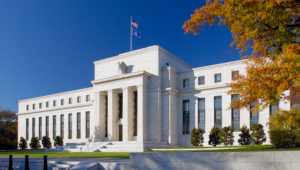$BTC $ETH $USDT
#crypto #bitcoin #ethereum #stablecoins #blockchain #cryptomarket #cryptocurrency #investing #finance #markets #trading #digitalassets
Stablecoin nationalism and attention-economy fatigue have become dominant forces dictating the current bearish trend in the cryptocurrency market. Over the past few years, stablecoins have grown significantly, providing traders and investors with a secure way to store value within the volatile crypto ecosystem. However, regulatory scrutiny and geopolitical tensions have led to a push for nationalized digital currencies, with governments preferring central bank digital currencies (CBDCs) over decentralized stablecoins like $USDT or $USDC. This shift has created uncertainty among investors who fear sudden regulatory crackdowns on private stablecoins, leading to decreased liquidity and a slowdown in crypto trading activity. Meanwhile, the crypto market’s dependency on retail investor sentiment has been exposed once again, as diminishing enthusiasm for speculative assets has resulted in lower trading volumes and shrinking market capitalization across major assets like $BTC and $ETH.
The broader macroeconomic environment has exacerbated the situation, with rising interest rates and tighter monetary policies reducing the appeal of risk assets. Institutional investors, who fueled the last crypto rally, are reallocating capital into safer investments, withdrawing from the speculative nature of digital assets. This shift has led to a liquidity crunch, where fewer new buyers are entering the market, and existing holders are hesitant to make further investments. Additionally, the regulatory landscape remains uncertain, with major jurisdictions such as the United States, the European Union, and China implementing stricter compliance measures on crypto transactions. This lack of regulatory clarity has created further hesitation among investors, adding downward pressure on prices. For many, the uncertainty surrounding future policies has made it difficult to confidently commit capital to the crypto sector.
Another critical factor contributing to the downturn is the fatigue within the attention economy, which plays a vital role in the success of cryptocurrencies. Unlike traditional markets that rely on corporate earnings and economic indicators, digital assets thrive on hype, social media narratives, and strong retail engagement. However, with the rise of artificial intelligence, competing investment opportunities, and shifting consumer interests, the crypto market is struggling to capture the same level of attention it once did. Trends such as memecoins and NFT speculation have lost momentum, and engagement across crypto-related social media platforms has fallen. With less hype driving demand, the industry is experiencing slower adoption rates and reduced speculation, further straining price action.
Looking ahead, the crypto market remains in a transitional phase, searching for new catalysts that could reinvigorate investor interest and push prices higher. Some hope that upcoming Bitcoin halving events or the potential approval of a spot Bitcoin ETF could bring renewed optimism. Others believe that real-world applications of blockchain technology, including decentralized finance (DeFi) and tokenized assets, may provide long-term stability. Until those catalysts materialize, however, the market may continue to experience volatility, with prices remaining under pressure due to macroeconomic challenges and regulatory uncertainty. Investors should remain cautious, closely monitoring liquidity trends, institutional participation, and shifts in the regulatory landscape as key indicators of potential market recovery.







Comments are closed.